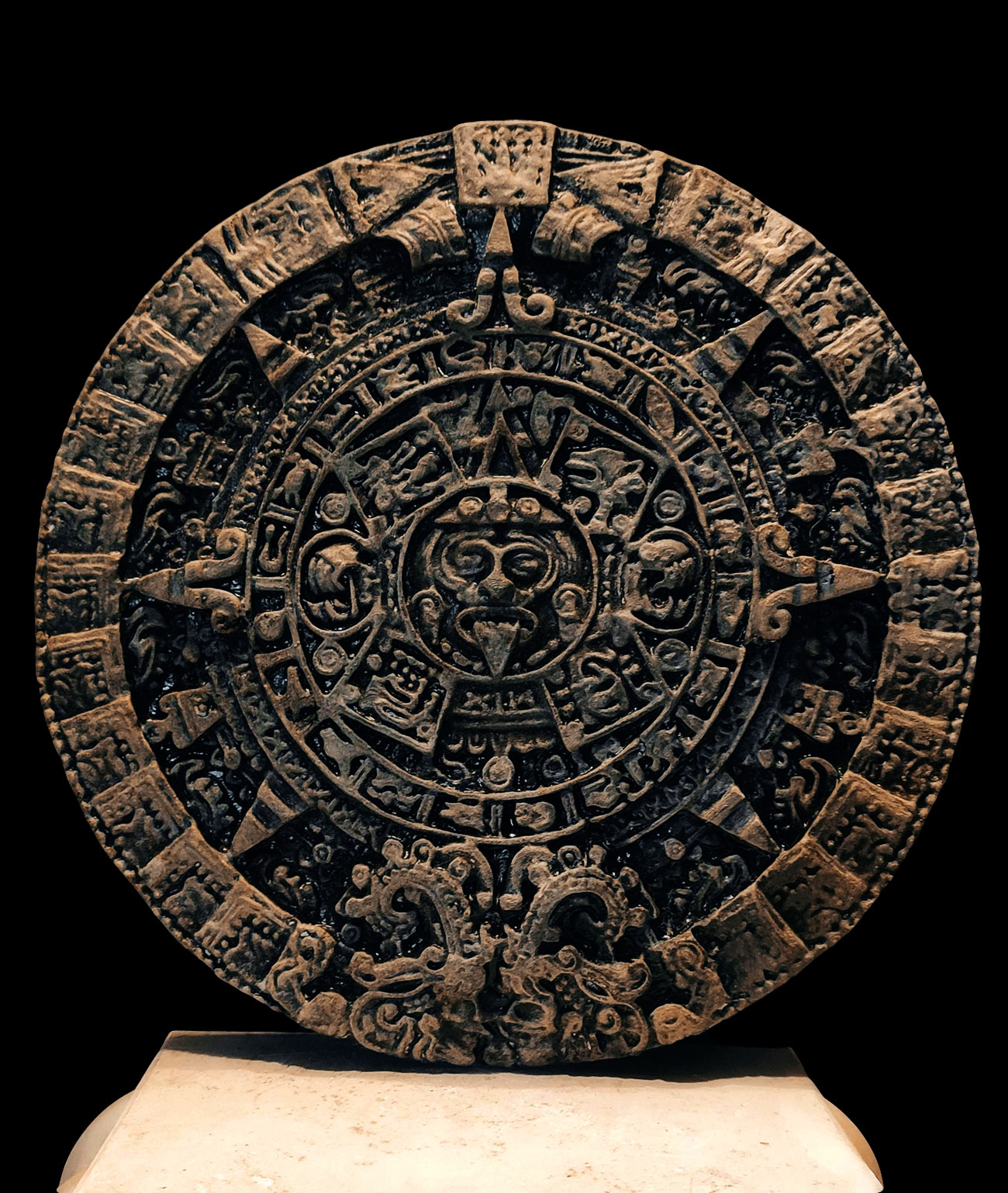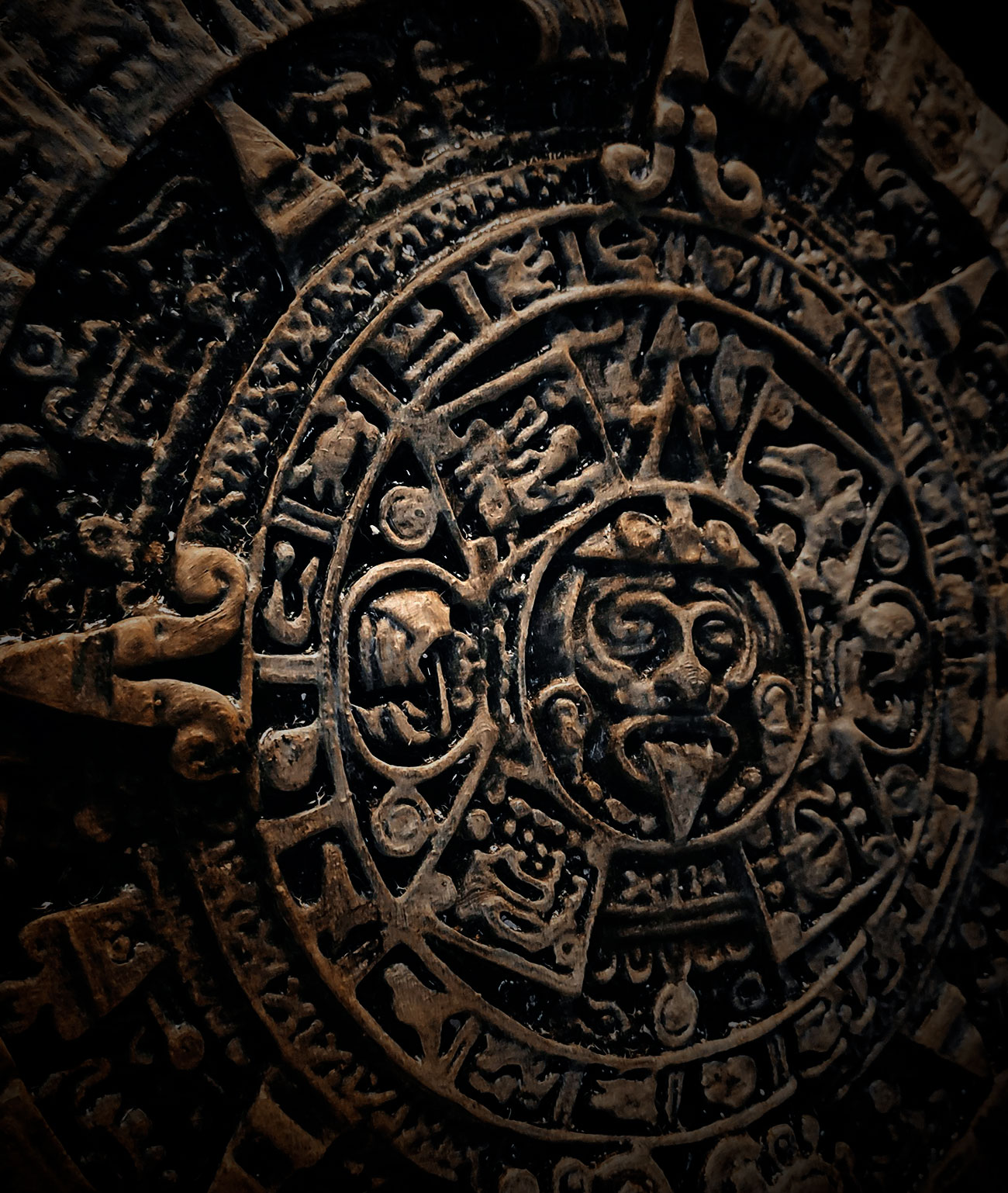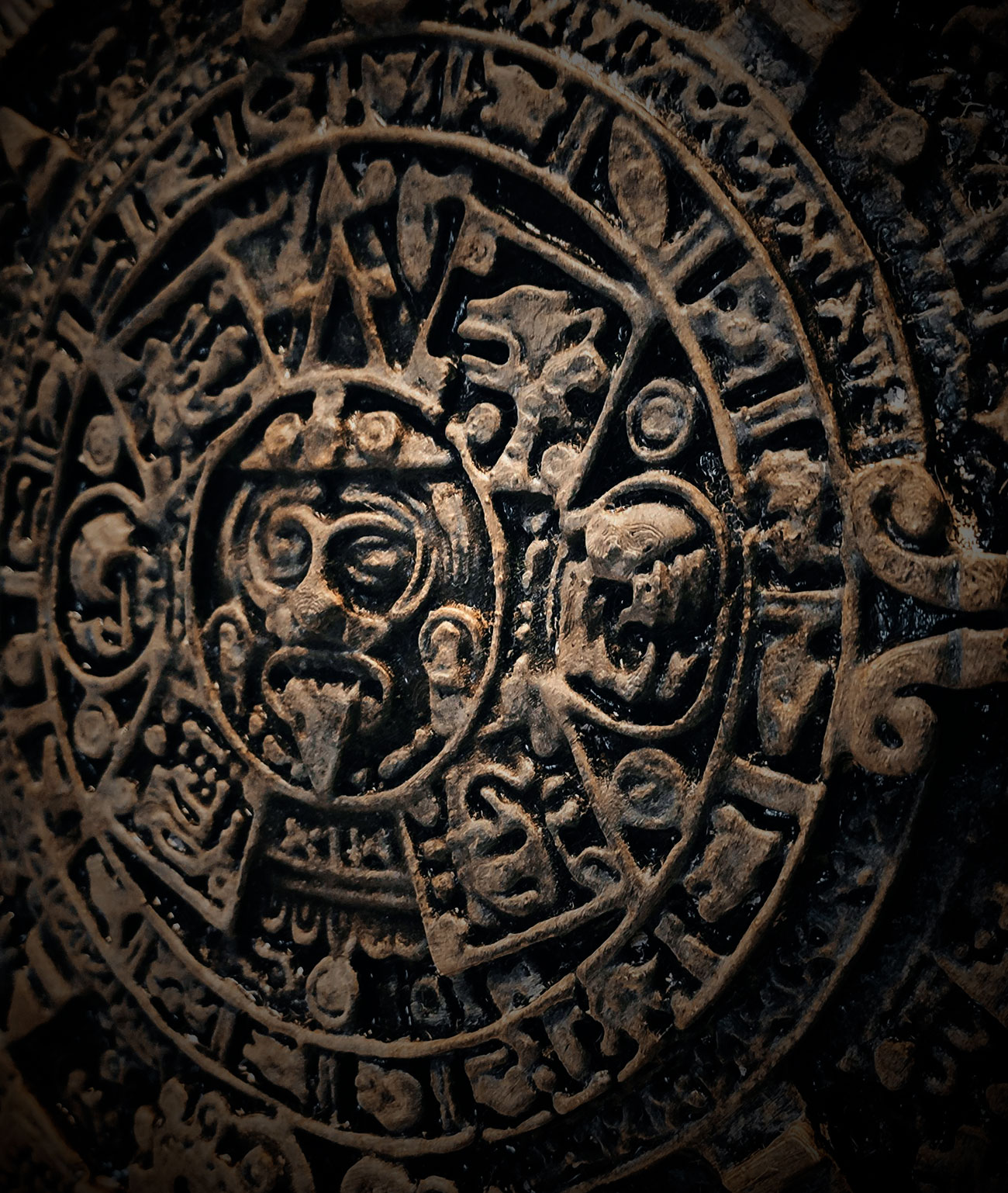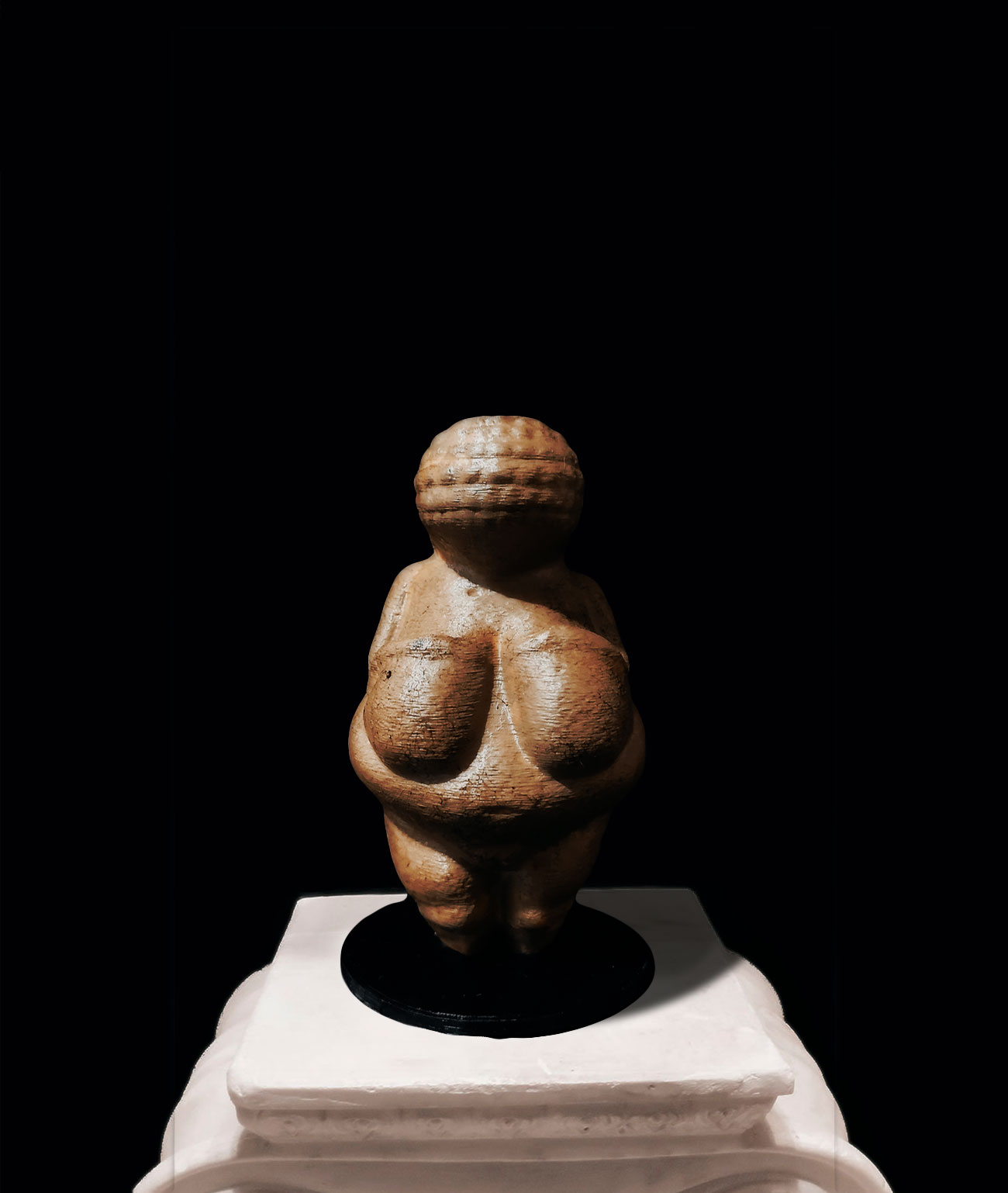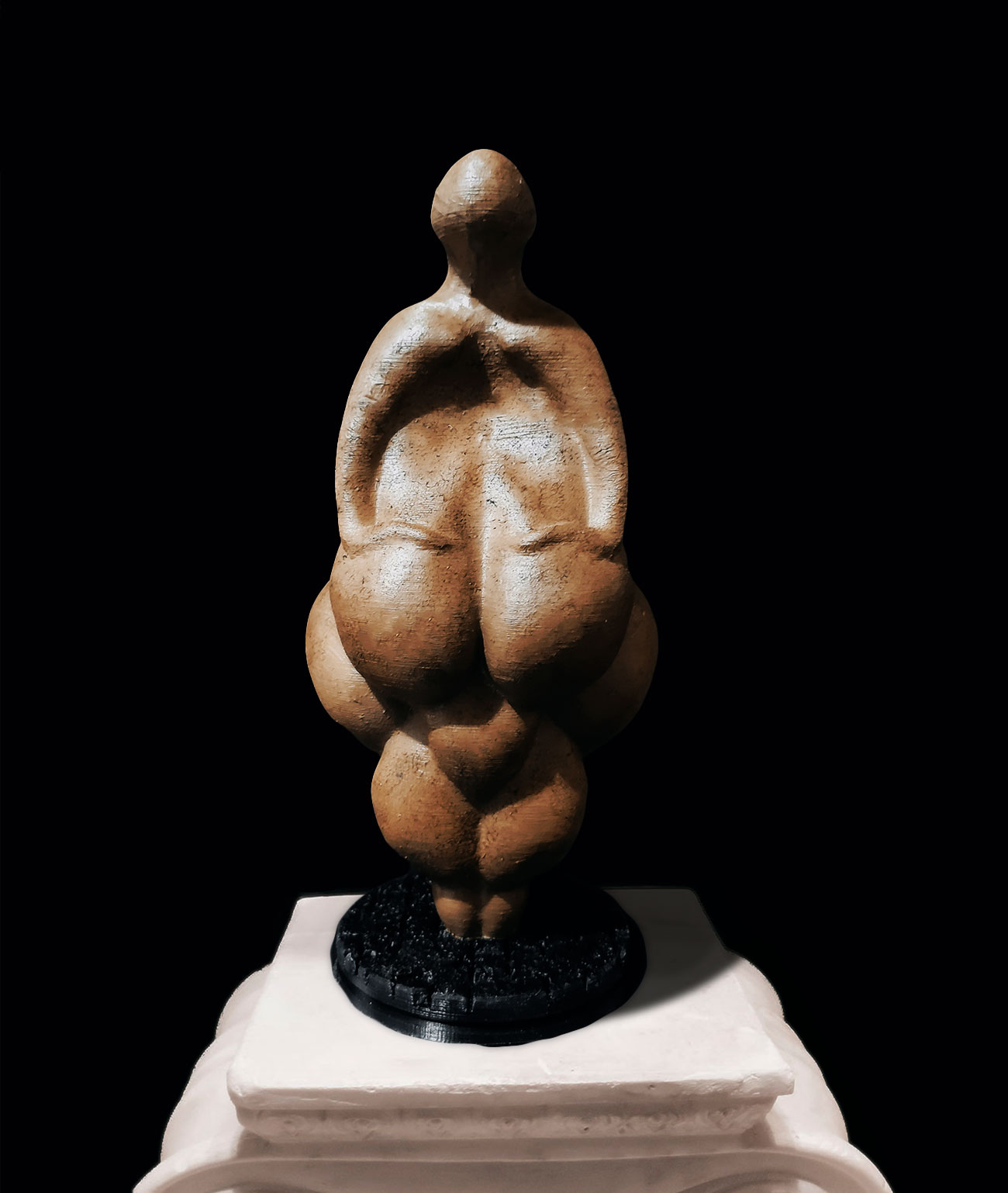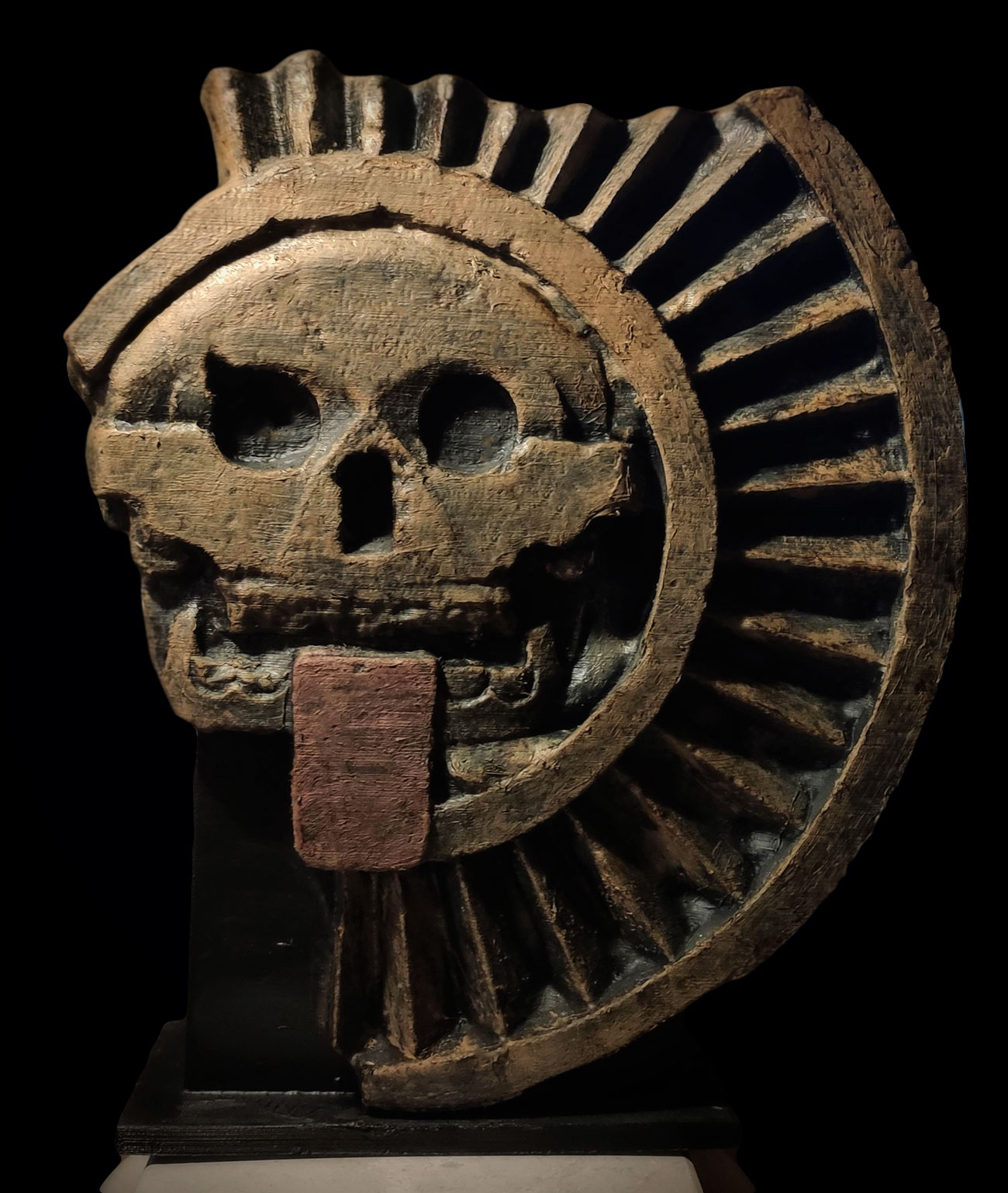Aztec calendar , Exact replica of the “Sun Stone” in Mexico
€124,00 (Inc. Tax)
The Sun Stone, discovered on December 17, 1790, is a block of olivine basalt measuring 3.60 meters in diameter and 122 centimeters thick, the total weight of the monolith is around 24 tons.
Its carving dates back to the Mesoamerican Postclassic Period between 1250 and 1521 AD. C, it is considered that the Aztec Calendar was created during the last stage of the Mexica splendor.
The monolith is arranged with a succession of concentric rings that have elements related to time, for example, it describes the duration of the months, the number of days that a year contained and the duration of the Mexica centuries.
In the stone disk there are also lines and points arranged outwards that denote four directions and movements of the sun.
In the center of the monolith is carved the face of Tonatiuh, known by the Aztecs as the fifth solar god (his name means tona: to make sun, tiuh: to go) and who was the leader of the sky.
The Aztec Calendar was discovered on December 17, 1790. It is located next to the current Zócalo of Mexico City.
The carved stone has a circular arrangement resembling the sun. In the center of the monument is the face of the solar god Tonatiuh. His tongue is shaped like a knife as a symbol of the human sacrifice that should be offered to the sun god to feed him and that he be reborn every day from the east (dawn), after his journey to the underworld (dusk).
the first ring
In the first ring, 20 figures are carved that symbolize the 20 days of the Mexica calendar, the first being the alligator (Cipactli), followed by the monkey (Ozomatl), the wind (Ehécalt), grass (Malinalli), house ( Calli), cane (Acatl), lizard (Cuetzpalin), jaguar (Ocelotl), snake (Cóatl), eagle (Cuauhtli), Skull (Miquiztli), Buzzard (Cozcacuauhtli), Deer (Mázatl), Tremor (Ollin), Rabbit ( Tóchtli), Flint(Tecpatl), Water(Atl), Rain(Quiahuitl), Dog(Izcuintli), Flower(Xóchitl).
the second ring
In this ring are a series of square sections containing five points representing the days.
The eight angles that divide the monument into eight parts may possibly represent the rays of the sun placed in the direction of the cardinal points.
the third ring
In the third ring are the jaws of two fire serpents (Xiuhcóatl), which surround the stone and face each other at the bottom.
Each section of them symbolizes the flames of fire and 52 annual cycles in which the Mexica century would be distributed. Each closing of the cycle was celebrated with the New Fire ceremony.
the fourth ring
In the fourth ring the stars of the night sky are carved. It contains 58 small circles that end in bands of amatl or amate paper, typically used during the pre-Hispanic period.
---------- Compartir producto ----------
PRODUCTOS RELACIONADOS:
Related products
-
Pack Venus Willendorf & Venus Lespugue 20cm. Exact replica. Marble powder finish
€58,95 – €99,95 (Inc. Tax) Select options

